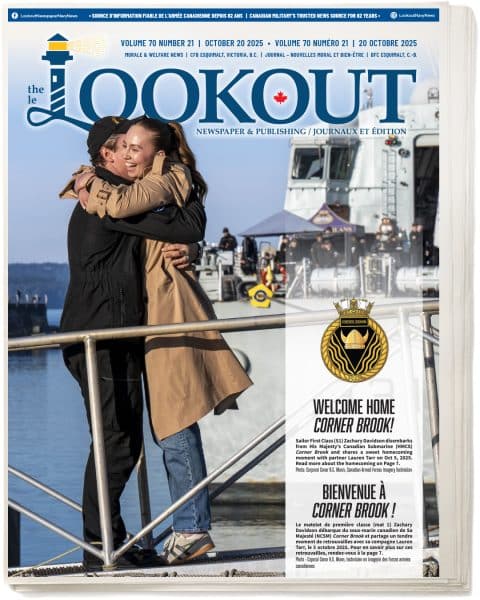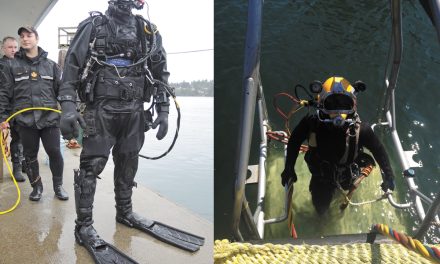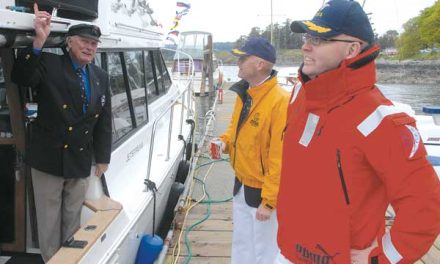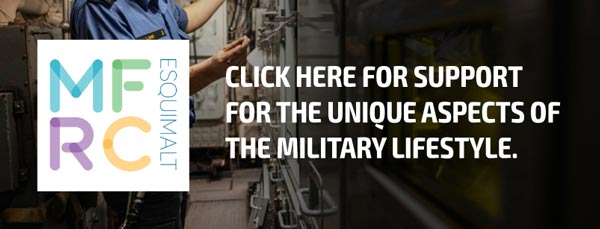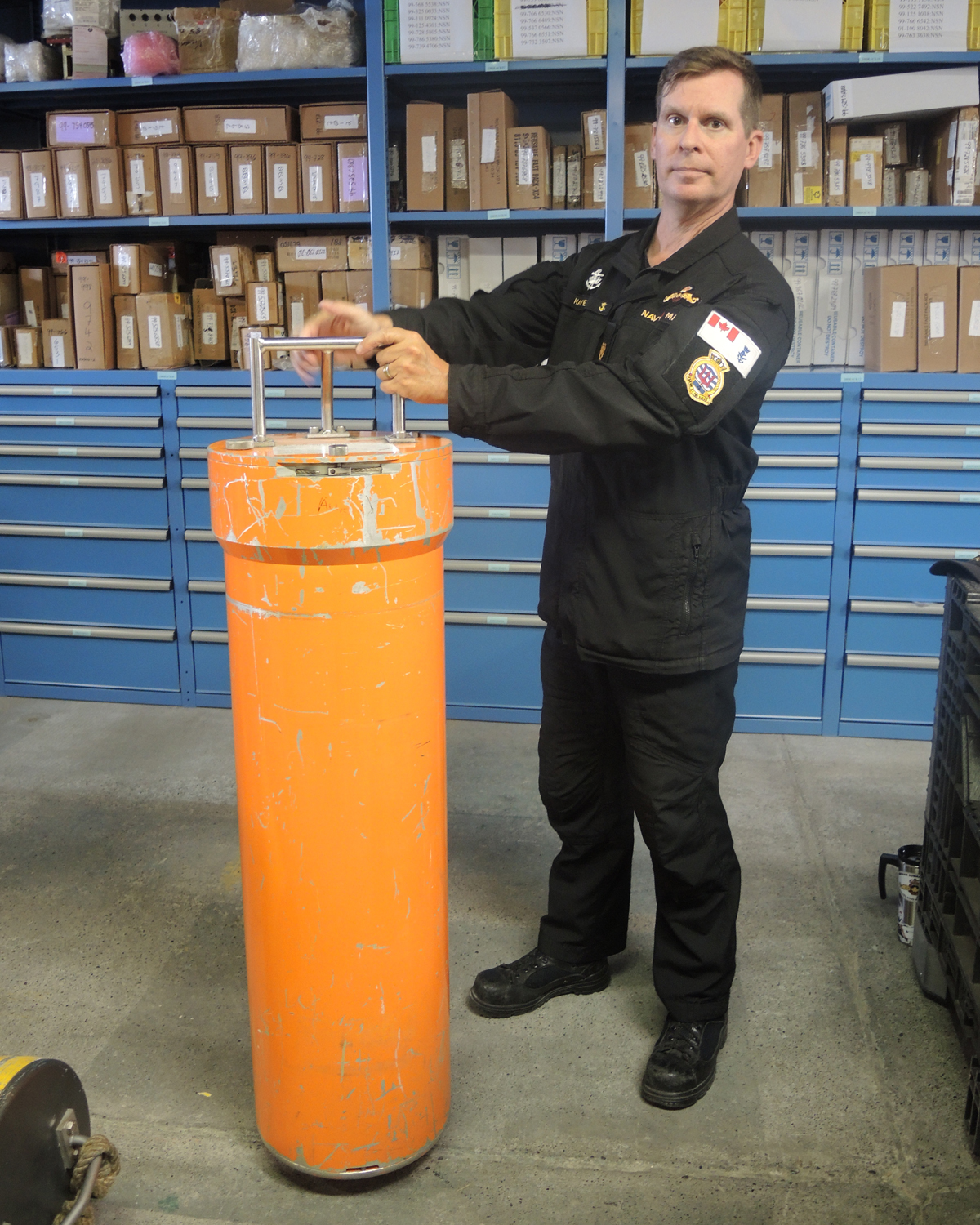
Chief Petty Officer 2nd Class (CPO2) Nelson Harvey, National Submarine Search and Rescue Coordinator displays CANSUBFOR PODs. Photo supplied.
Kate Bandura,
Lookout Contributor
Lookout Contributor
—
Beneath the waves, Canada’s Submarine Force (CANSUBFOR) operates in one of the most challenging environments known to humankind. The silent service demands not only courage and skill but also an unwavering commitment to safety.
In an exclusive interview with The Lookout, Chief Petty Officer 2nd Class (CPO2) Nelson Harvey, National Submarine Search and Rescue Coordinator, pulls back the curtain on the sophisticated equipment and rigorous training that safeguard Canada’s submariners.
From recompression chambers to individually tailored escape suits, CANSUBFOR employs an arsenal of technology designed to protect its personnel in the most extreme scenarios.
But technology alone isn’t enough. As CPO2 Harvey reveals, it’s the relentless focus on training and preparedness that truly sets CANSUBFOR apart in the realm of submarine safety and rescue operations.
Submarine Re-Compression Chamber (RCC):
The immediate first aid crown jewel of CANSUBFOR’s rescue equipment is the Submarine Re-Compression Chamber (RCC), a portable hyperbaric unit that can be rapidly deployed to submarine incident sites. According to CPO2 Harvey, it’s a fully transportable chamber that can be flown to a port close to the submarine incident and loaded on a ship for quick deployment.
The RCC’s importance cannot be overstated. In the critical moments following a submarine incident, this chamber can mean the difference between life and death. It is crucial in treating decompression sickness, a potentially fatal condition affecting submariners who surface too quickly.
“We know that for every 10 sailors that are sent to the surface from a distressed submarine, 7 will most likely die without medical intervention and recompression,” CPO2 Harvey says, underlining the crucial role of this equipment in submarine rescue operations.
By providing immediate recompression treatment at the incident location, the RCC dramatically improves survival rates for affected sailors. The international submarine community are investing in multiple research projects to see if we can leverage cutting edge technology in solving getting a large RCC that is still portable.
Individual Escape Suits:
CANSUBFOR equips its submariners with specialized escape suits designed for emergencies. These suits are the submariners’ lifeline in extreme situations, allowing escape from depths that would otherwise be fatal.
“The submarine escape suits are specifically designed to allow a submariner to escape through the specialized escape tower on a submarine from a depth down to 180m (600 ft),” CPO2 Harvey says.
But the suit’s functionality doesn’t end at escape: the suit provides buoyancy and air supply so the submariner can breathe normally all the way to the surface. Once there, submariners can deploy individual life rafts attached to their suits, offering protection from the elements and improving visibility for rescue operations.
Individual Life Rafts:
Attached to each escape suit is an individual life raft, a compact but crucial piece of survival equipment.
“The single place life raft is attached to the leg of the escape suit and is deployed by the submariner once they reach the surface,” CPO2 Harvey says.
The raft’s deployment is designed for speed and ease of use in high-stress situations: it is an easy single pull on a lanyard to deploy the raft, which inflates in seconds.
These rafts are more than just flotation devices. They come equipped with a salt-water-activated light for visibility, a sea anchor to slow drift, a bailer to remove water and can be lashed together for safety and to be better seen from a ship or airplane.
Oxygen Generators and CO2 Absorption Canisters:
Air quality management is crucial in the enclosed environment of a submarine. CANSUBFOR employs chemical oxygen generators and CO2 absorption systems to ensure air quality and maintain breathable air. The oxygen generators can provide up to seven days of breathable air in worst-case scenarios, while CO2 absorption canisters and lithium hydroxide curtains keep carbon dioxide levels in check.
“The submarine chemical oxygen generator provides 2,600 litres of breathable oxygen per candle by ‘burning’ a chemical in an insulated canister,” CPO2 Harvey explains. “These ‘candles’ are a vital resource, with every Royal Canadian Navy (RCN) submarine carrying hundreds of these onboard for daily use and a specific amount of reserve designated only for escape.”
Complementing the oxygen generators are CO2 absorption canisters and curtains. These are not specifically for escape but can be used to bring down the CO2 levels inside the ship.
“Strictly for escape, we have lithium hydroxide curtains that absorb many gasses and can keep the atmosphere in spec for up to seven days,” CPO2 Harvey says.
Firefighting Equipment:
Fire safety is another crucial aspect of submarine operations as fire poses an extreme threat in the confined spaces of a submarine. CANSUBFOR submarines are equipped with multiple firefighting systems, including chemical foam hoses, pneumatic systems, and Halon-based suppression units.
“The submarines have two designated fire fighting stations with centre-fed hose reels that use a chemical concentrate foam to help put out fires,” CPO2 Harvey says.
For situations where power is lost, the submariners also have two pneumatic systems that use compressed air to push out the water foam combination called the SFU-90. The submarines are also equipped with several compartments that have a fitted system with Halon and, finally, there is a deluge system in the engine room. This multi-layered approach to fire safety underscores CANSUBFOR’s commitment to crew protection in all scenarios.
Regular Training:
Regular training ensures all submariners are proficient in using this equipment in the confined spaces of a submarine.
Every two years, personnel must recertify their escape qualifications, undergoing medical evaluations and practical training in escape procedures. All submariners are taught the basics of escape on their Basic Submarine Course (BSC) and must consolidate that knowledge to the satisfaction of the Coxswain before they achieve the Submariner qualification (their Dolphins).
CANSUBFOR maintains a unique system called the POD, which simulates the delivery of supplies to a distressed submarine on the ocean floor. This system allows submariners to practice critical skills in receiving emergency supplies and managing crisis situations.
“In a simulation of an event like this, we train to have a group of submariners contact a ship on the surface on the Emergency Under Water Telephone with items they need. The ship will lower the POD to the submarine where a diver or remote-operated vehicles (ROVs) can place the POD in the pod posting bag rigged in the escape tower. The crew then shuts the hatch, drains down the tower and lowers the POD into the escape compartment to retrieve supplies,” CPO2 Harvey explains.
The Force’s commitment to safety extends beyond its own fleet: CANSUBFOR plays a significant role in international submarine rescue efforts, participating in global exercises and offering expertise through the International Submarine Escape and Rescue Liaison Office (ismerlo.org).
“Going to sea on a submarine is like going into space – it’s inherently dangerous, but not foolhardily so,” CPO2 Harvey says.
CPO2 Harvey stresses the RCN not only has submarines but also the ability to help save submariners if there ever was an incident. The Force’s involvement in the 2023 Titan submersible incident demonstrates its readiness to assist in international emergencies.
Looking to the future, CANSUBFOR is exploring innovative technologies to enhance its rescue capabilities. Plans include acquiring ROVs for deep-water interventions and developing mini-pods for supply delivery at greater depths.

PODs being delivered underwater. Photo supplied.
